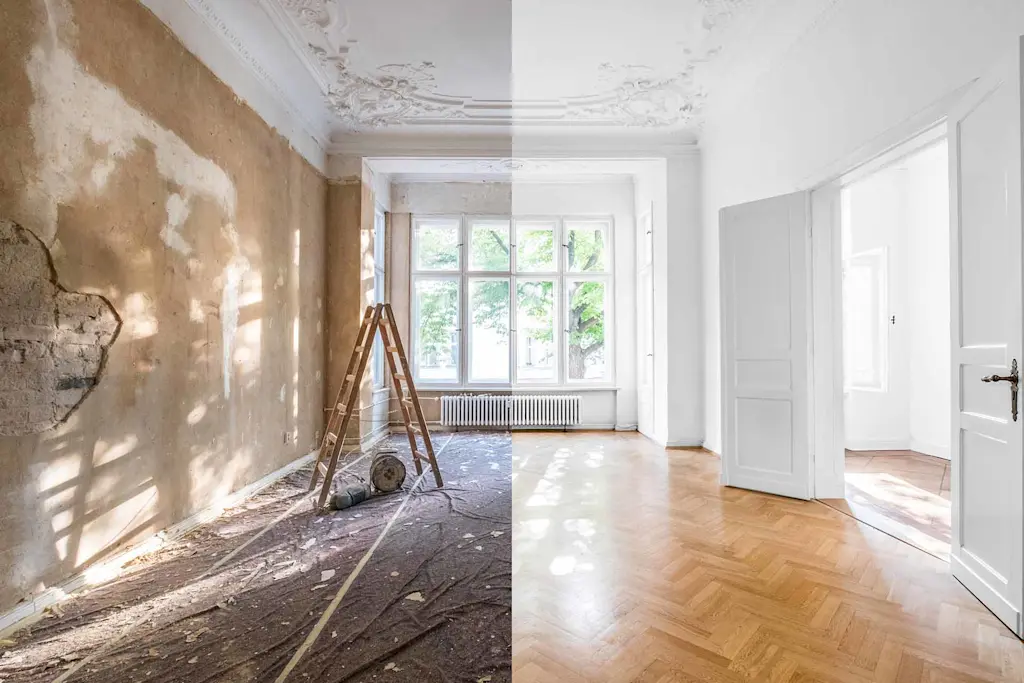HOW TO PLAN A HOUSE RENOVATION
Renovating your home can be one of the most exciting — and overwhelming — projects you’ll take on. Whether you’re updating a single room or giving your entire house a fresh start, careful planning is the key to a smooth renovation that stays on time, on budget, and on vision.
At CraftBuilt Homes, we’ve guided hundreds of homeowners through successful renovations, and we’re here to share the essentials on how to plan a house renovation the right way.

In this article you’ll find
Step 1: Know Why You’re Renovating (Not Just What)
🛑 Common Mistake: Jumping into a renovation just because “it’s time” or “everyone else is doing it.”
Before choosing materials or layouts, ask yourself:
- Am I renovating for resale or for myself?
- Do I need more function, better aesthetics—or both?
- What specific problems am I solving?
🎯 Pro Tip: Define your top 3 renovation goals and use them as your compass throughout the project.
Step 2: Set a Budget—and Then Add 15%
🛑 Common Mistake: Creating a budget based on best-case scenarios.
Renovations always come with surprises—mold, outdated wiring, delivery delays. If your budget is tight with no wiggle room, stress is guaranteed.
💡 Pro Tip: Build in a 10–15% contingency buffer. You’ll thank yourself later.
Step 3: Plan Before You Demo
🛑 Common Mistake: Tearing down walls without a finalized design.
Spur-of-the-moment changes slow projects and cost more. Always finalize:
- Floor plan
- Fixtures & finishes
- Cabinetry layout
- Lighting plan
📏 Pro Tip: Even if you’re not hiring an architect, sketch or digitally map your new layout first—it forces clarity.
🔨 Step 4: Hire the Right Contractor (Not Just the Cheapest)
⚠️ Common Mistake: Going with the lowest bid and regretting it later.
Instead, look for:
- Licensed & insured professionals
- Transparent quotes & timelines
- Strong communication
- Reviews or referrals
🛠️ At CraftBuilt Homes, we pride ourselves on building trust and delivering quality — not cutting corners.
Step 5: Don’t Skip the Permits
🛑 Common Mistake: “It’s just a small job—I don’t need a permit, right?”
Wrong. Even small upgrades can require permits (especially for plumbing, electrical, or structural work). Skipping this step can delay resale or trigger fines.
📎 Pro Tip: Let your contractor handle the permits—but always ask what’s required so you’re in the loop.
Step 6: Make Selections Early
🛑 Common Mistake: Waiting to choose materials until after the project starts.
That beautiful tile you saw online? Backordered for 12 weeks. Meanwhile, your contractor is waiting and your schedule slips.
🛠️ Pro Tip: Order your materials before demo starts. No delays, no last-minute panic shopping.
Step 7: Respect the Process—and Prepare Your Life
🛑 Common Mistake: Underestimating the disruption of living through a renovation.
There will be dust. There will be noise. Your morning coffee routine might be relocated to the garage.
🏡 Pro Tip: Set up a temporary kitchen or workspace if needed, and plan around big milestones (like vacations or school exams).
Bonus Tip: Don’t Let Pinterest Be Your General Contractor
🛑 Common Mistake: Trying to replicate online inspiration without considering your home’s reality.
Just because it looked amazing in a million-dollar home in California doesn’t mean it’s practical for your 1980s colonial in Florida.
🎯 Pro Tip: Use inspiration for style, not structure. Your home has its own bones. Work with them, not against them.
Final Thoughts
Renovating your home doesn’t have to be chaotic or stressful. If you start with a plan, budget smart, and work with pros who care—like the team at CraftBuilt Homes—you’ll avoid the common traps and actually enjoy the process.
Because the truth is, a well-done renovation doesn’t just change how your home looks—it changes how you live in it.
👉 Ready to renovate without regrets?
Let CraftBuilt Homes walk you through it, step by step.
Contact us today to schedule your in-home consultation.
Renovation Process Overview
Step 1
Assess your space and set a clear plan.
Step 2
Gather materials and hire necessary help.
Step 3
Begin with demolition and structural changes.
Step 4
Finalize with design and finishing touches.


